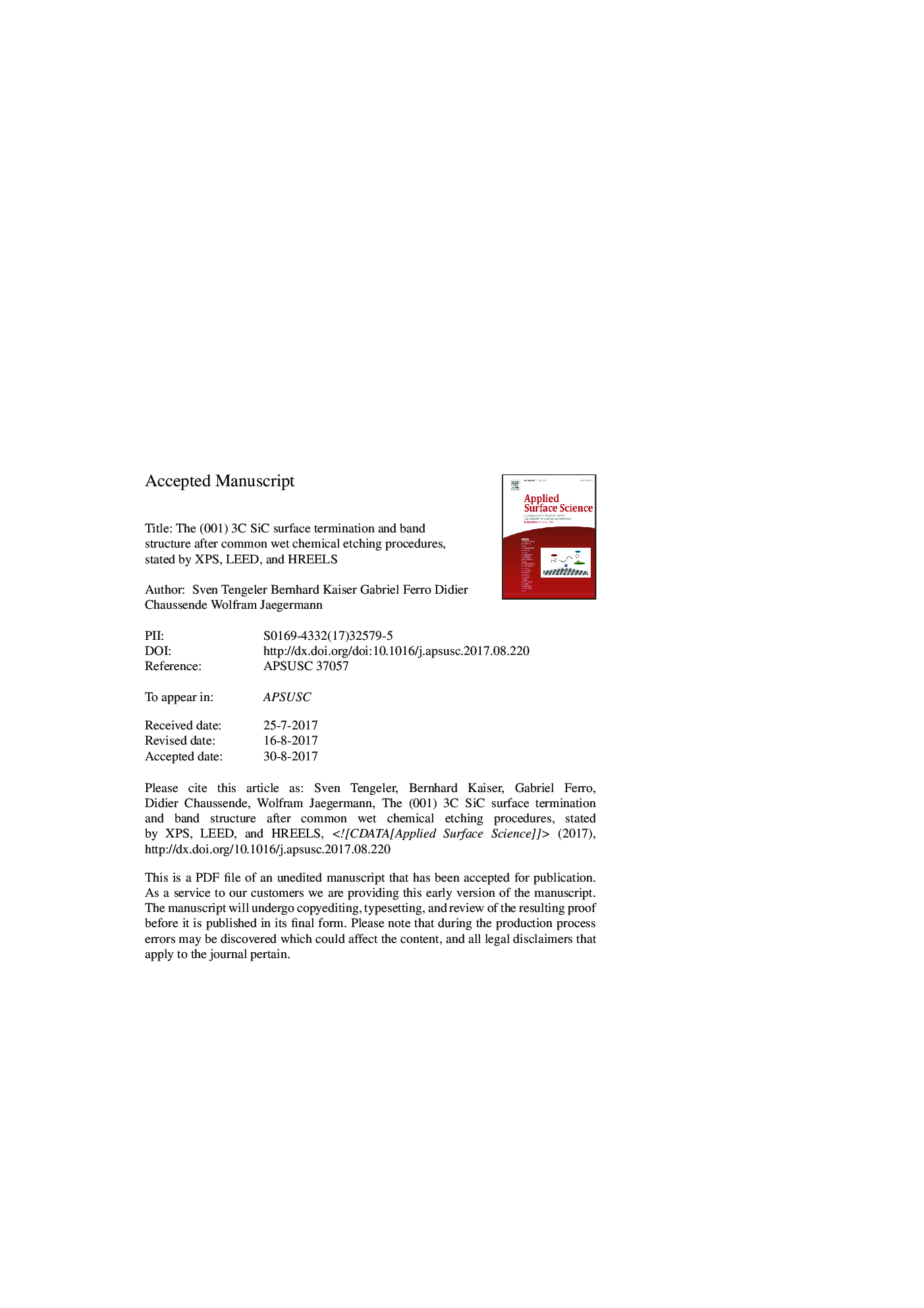| Article ID | Journal | Published Year | Pages | File Type |
|---|---|---|---|---|
| 5349250 | Applied Surface Science | 2018 | 10 Pages |
Abstract
The (001) surface of cubic silicon carbide (3C SiC) after cleaning, Ar sputtering and three different wet chemical etching procedures was thoroughly investigated via (angle resolved) XPS, HREELS, and LEED. While Ar sputtering was found to be unsuitable for surface preparation, all three employed wet chemical etching procedures (piranha/NH4F, piranha/HF, and RCA) provide a clean surface. HF as oxide removal agent tends to result in fluorine traces on the sample surface, despite thorough rinsing. All procedures yield a 1Â ÃÂ 1 Si-OH/C-H terminated surface. However, the XPS spectra reveal some differences in the resulting surface states. NH4F for oxide removal produces a flat band situation, whereas the other two procedures result in a slight downward (HF) or upward (RCA) band bending. Because the band bending is small, it can be concluded that the number of unsaturated surface defects is low.
Related Topics
Physical Sciences and Engineering
Chemistry
Physical and Theoretical Chemistry
Authors
Sven Tengeler, Bernhard Kaiser, Gabriel Ferro, Didier Chaussende, Wolfram Jaegermann,
